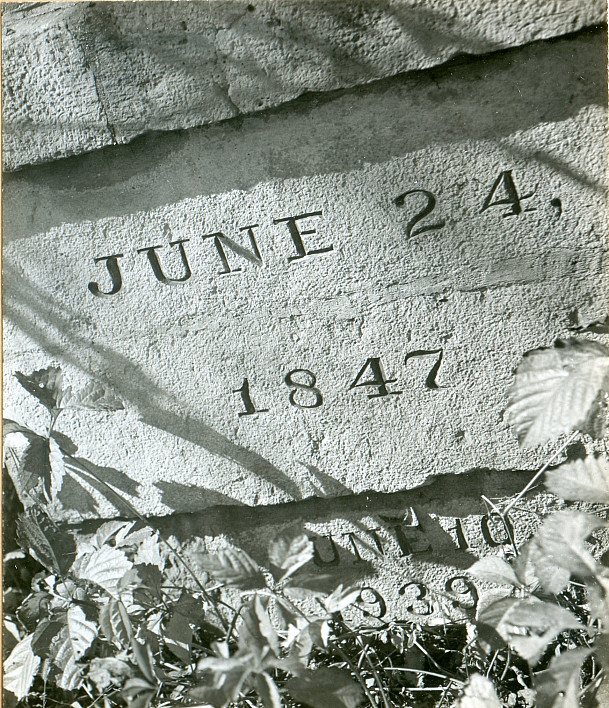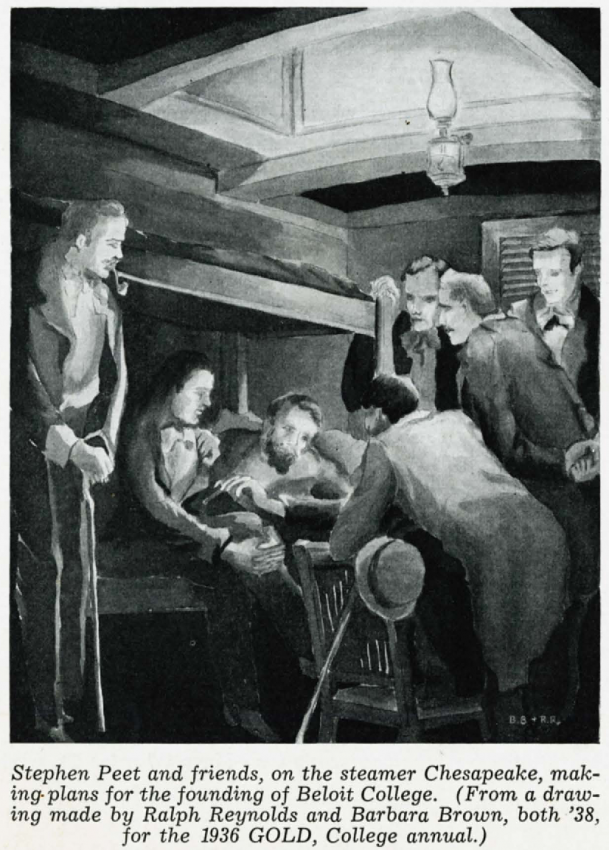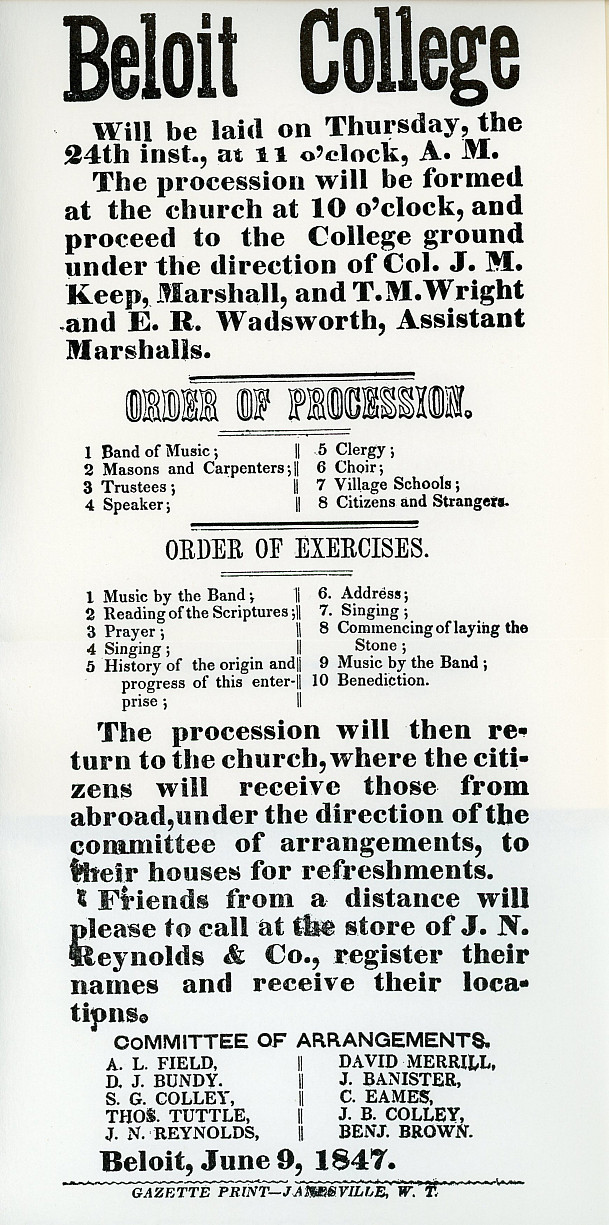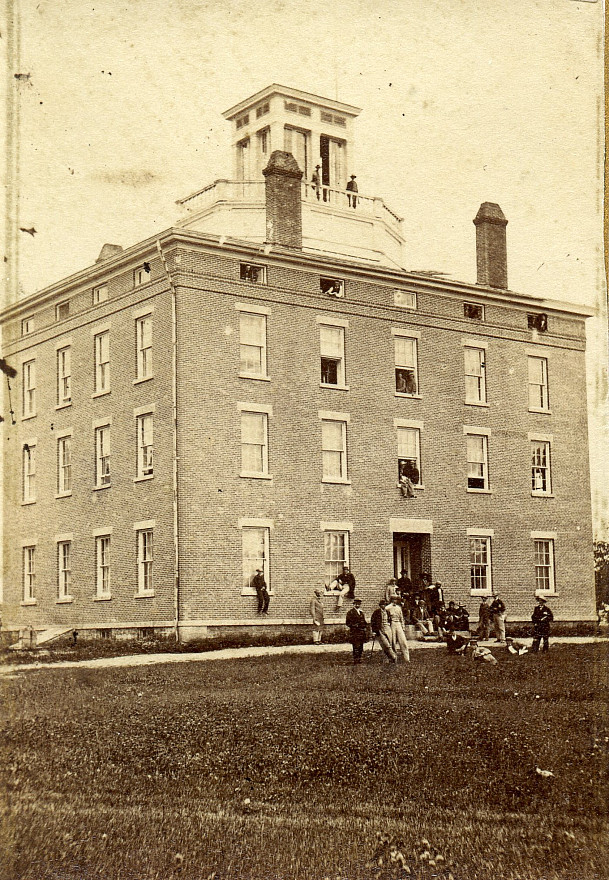Fridays With Fred: The Building of Beloit College
June 24, 1847 was, as one newspaper correspondent put it, “a great day for Beloit and its infant college…as bright as ever dawned.” At 10 a.m., two thousand citizens and visitors met at the Congregational Church and then marched through the village and to the steep bluff overlooking the Rock River. There, they gathered in a grove of magnificent bur oak trees. After years of hopes and dreams and painstaking plans, this early summer day would provide the young community with something tangible at last.

In 1837, one of Beloit’s founders, Dr. Horace White, commissioned a planning map, known as the Kelsou Survey, which imagined the new city as he and other pioneers hoped it would be. Nestled among “Canal Street” and “Hydraulic Street,” appeared a “College Street.” Pioneers moving west from New England wanted familiar institutions, including mills, mercantile establishments, churches, and schools. The best Eastern cities also had colleges. Why not Beloit?

The Beloit Seminary began instruction in 1843, housed in the basement of the Congregational Church, then located on the northwest corner of Broad and Prospect. It was an excellent preparatory school but it wasn’t yet a college. In June of 1844, a “Convention of Western Ministers and Churches” met at Cleveland, Ohio. Returning west on Lake Erie, some of the delegates gathered in a tiny stateroom on board the steamer, “Chesapeake,” including Stephen Peet and Aaron Lucius Chapin, later elected first president of Beloit College.
Chapin recalled the meeting: “You may see seven of us crowded together in that narrow room. Stephen Peet, to whom belongs the honor of being foremost and chief of the founders of Beloit College, is lying on the berth, ill in body, but his fertile mind as active as ever in planning for the spiritual interests of this region. By his side sits Theron Baldwin, then just entering on his life-work…The Western College Society was fairly organized and Baldwin, its Secretary and soul, unfolds its purpose and plans. There is light and hope in what he says. A hand from the East will be stretched out to help on the establishment of genuine Christian colleges, judiciously located here and there in the West. Peet seizes on the gleam of encouragement, his uttered thoughts kindle enthusiasm and hope in the rest. There is an earnest consultation — there is a fervent prayer — there is a settled purpose and Beloit College is a living conception.”

The men set to work. On August 6, 1844, ministers and educators from Illinois, Iowa, and Wisconsin Territory, met at Beloit’s Congregational Church to discuss the founding of colleges, including establishing one in Iowa and both a college and female seminary near the Illinois and Wisconsin border. Over the next year and a half, they sponsored three more conventions. At the third, held in May of 1845, 68 of 69 attendees voted to establish a college at Beloit. Then, at the convention in October, they created a Board of Trustees. As their long-held dream took shape, Beloiters felt a palpable enthusiasm. Beloit College now existed, but without a site, without a faculty, and without students. The Trustees, however, were determined: “By the blessing of God we will commence the course of college instruction in the fall of 1847.”
Building a college in a remote, though growing, small town, was a daunting task. In his Historical Sketches of Beloit College, President Edward Dwight Eaton observed that at that time Beloit was “five hundred miles from the nearest trunk line of a railroad. It required about three days’ driving to reach Beloit from Chicago or Milwaukee.” Eaton described Beloit College as “absolutely nothing but a name, a hope, a purpose, a prayer.”

First, Beloit citizens offered a prime ten-acre site for the college and, by 1846, had pledged $7,000 to fund construction of its first building. Sereno T. Merrill, briefly the college’s first instructor, remarked later that donor Lucius Fisher, “had a few loads of stone hauled upon the campus” to show that work was underway at last. Not long after, as Merrill said, they officially broke ground: “Let us follow the crowd and stand beside those men of faith. A few shovelfuls of earth were removed from the spot which now marks the northwest corner of Middle College, [and] a few stones laid…The solemnity and impressiveness of the scene will never be forgotten by those who witnessed it.”
Meanwhile, the Trustees had prepared a college charter, enacted by the Wisconsin Territorial Legislature on February 2, 1846. And, under the tutelage of Sereno T. Merrill, several ambitious Beloit Seminary students were preparing for college.
Newspapers began to take notice of the incipient college. One, The American Freeman, of Prairieville, Wisconsin, observed, “We are happy to learn, among other things favorable to this rising college, that it is to be open to colored students on equal terms with others.” Although nearly 50 years would pass until Beloit College admitted women, it was already planning for a diverse student body.
Those thousands crowded under the campus oaks that June of 1847, enjoyed lively melodies from Beloit’s city band, sang songs, listened to Aaron Chapin’s account of the brief history of Beloit College, and endured multiple speeches. Afterwards, they moved into the open, where stonemasons had erected some tentative-looking walls, ready for the bricklayers, but with a gap at the southeast corner. Officials had prepared a “leaden box” to serve as a time capsule. The Milwaukee Daily Sentinel reported its contents as: “the charter of the college and sundry other documents, a copy of Lapham’s Wisconsin and McCabe’s Directory of Milwaukee, the papers of the day and some specimens of currency, metallic and paper.” After sealing the box and placing it inside the cornerstone, and after another speech, workmen set the cornerstone in place, where it resides to this day, its date proudly carved in the soft limestone, now worn and weathered. Once dubbed “the college edifice,” we know the building today as Middle College.

The Milwaukee Sentinel correspondent set down the newly founded college’s aims: “It is the determination of the Trustees to make the standard of scholarship as high, and the course of instruction as thorough and exact as at any of the older institutions.” The paper continued: “We sincerely hope that its day may be as bright and enduring, as its dawn is full of promise.”
On a cold evening in early November of 1847, five students buckled down and underwent stringent examinations in Latin and Greek, mathematics, geography, and English grammar. The following Monday, November 8, they entered Beloit College as its first students.



